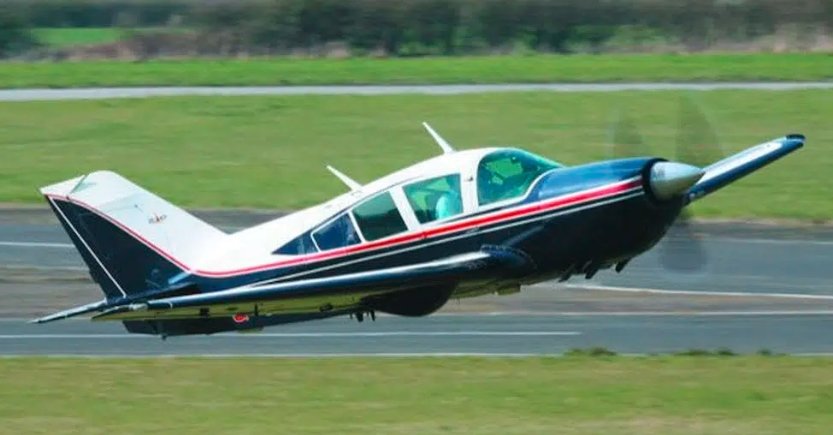Scotland’s skies might be a little cleaner in the years ahead—and it’s not because of the rain.
LoganAir, the country’s biggest regional airline, has struck a deal with ZeroAvia, a hydrogen aviation startup with backing from both sides of the Atlantic. The goal? To begin swapping out jet fuel for hydrogen, cutting emissions to near zero on some of Scotland’s shortest, yet most vital, air routes.
It’s a small step on the global scale—but a potentially giant leap for an island-heavy nation that still relies on planes for basic connectivity.
ZeroAvia’s Engine Runs on Water—Literally
The tech sounds futuristic, but the concept is surprisingly simple.
ZeroAvia’s hydrogen-electric system uses fuel cells to convert hydrogen into electricity. That power drives an electric motor. The only thing that comes out the tailpipe? Water vapor.
No kerosene. No CO₂.
The company has been racing to develop two core systems:
-
The ZA600, a 600-kilowatt powertrain designed for aircraft with 9–19 seats
-
And a larger ZA2000, aimed at 40–80 seat regional planes like the ATR-72
LoganAir has signed a memorandum of understanding (MoU) to explore fitting some of its planes with the ZA600, including smaller commuter aircraft used on short hops between Scotland’s far-flung islands and mainland cities.

A Perfect Match of Route and Technology
Luke Farajallah, LoganAir’s CEO, sees serious potential in the partnership.
With dozens of small aircraft flying short-haul routes—often less than 300 miles—LoganAir’s fleet is an ideal sandbox for ZeroAvia’s early rollout. Especially on routes where bigger jets are impractical and train or ferry alternatives simply don’t exist.
“This isn’t just greenwashing,” Farajallah said during the Paris Air Show. “We’ve got the right network, the right aircraft types, and a genuine commitment to a lower-carbon future.”
Right now, LoganAir operates:
-
3 De Havilland Twin Otters
-
Over 20 ATRs (including ATR 42 and ATR 72 models)
-
Smaller workhorses like the Britten-Norman Islander (BN-2)
-
And larger regional jets like the Embraer ERJ-145
That gives ZeroAvia a live environment to scale—from early tests on 10-seaters to potentially retrofitting twin-turboprops down the line.
Retrofits Begin with Cessna Caravan
While LoganAir isn’t jumping into hydrogen flights just yet, ZeroAvia is already putting hardware in the air.
The launch platform for its ZA600 system is the Cessna Caravan—a rugged, single-engine plane widely used in remote areas. It’s the same kind of aircraft trusted for mail runs, medevacs, and passenger service in Alaska and Africa.
ZeroAvia says it’s already received over 2,000 preorders for the powertrain, including a conditional deal with United Airlines for 100 units.
And they’re moving fast. The UK Civil Aviation Authority is now reviewing certification for both the ZA600 and its beefier sibling, the ZA2000.
ZeroAvia hopes to complete test flights with RVL Aviation—the intended launch operator—before the end of 2025.
What’s Fueling the Hydrogen Rush?
Hydrogen isn’t new. What’s changed is the urgency—and the economics.
With aviation emissions under increasing pressure, short-haul flights have come under scrutiny. Europe’s Fit for 55 climate package, alongside growing noise around domestic flight bans, is making life harder for regional airlines. Hydrogen-electric propulsion, if it works, could be a lifeline.
There’s also cash on the table. In the UK, the Jet Zero Strategy offers support for zero-emissions aviation projects. Meanwhile, the US Inflation Reduction Act is handing out billions in hydrogen credits.
And for Scotland? Decarbonizing island air routes is political gold. It touches on rural connectivity, climate targets, and high-tech jobs—especially if Scotland’s aerospace industry gets a piece of the action.
So What’s the Catch?
Don’t expect hydrogen flights to be mainstream anytime soon.
The tech is still experimental. Infrastructure at airports—hydrogen fueling, storage, fire safety—is practically nonexistent. Certification remains a long process, even for retrofits. And hydrogen itself is tricky to produce, store, and transport.
Also, retrofitting planes means downtime. It’s not just plug and play.
“There’s a huge learning curve,” said one Scottish aviation consultant. “But the upside is obvious. Scotland’s geography is made for this. If anyone can make short-haul hydrogen flights work, it’s probably LoganAir.”
Eyes on 2030—but Steps Begin Now
LoganAir hasn’t said exactly when hydrogen-powered flights might begin. But insiders suggest early demo flights could happen before 2027, with commercial integration possible around 2030—assuming certifications and economics line up.
In the meantime, LoganAir says it’ll continue exploring other sustainability measures, like sustainable aviation fuel (SAF) and fleet modernization.
Still, this move puts it in rare company. Few airlines are this public about testing hydrogen in commercial aviation.
And if it works? Scotland’s tiny, windswept runways might soon be the unlikely stage for a global aviation breakthrough.


















